Un Periódico Diferente / A Different Kind of Newspaper

Alexis MAssol González Receives Honorary
ente / A Different Kind of Newspaper
Doctor of letters Degree from Amherst College

Un Periódico Diferente / A Different Kind of Newspaper
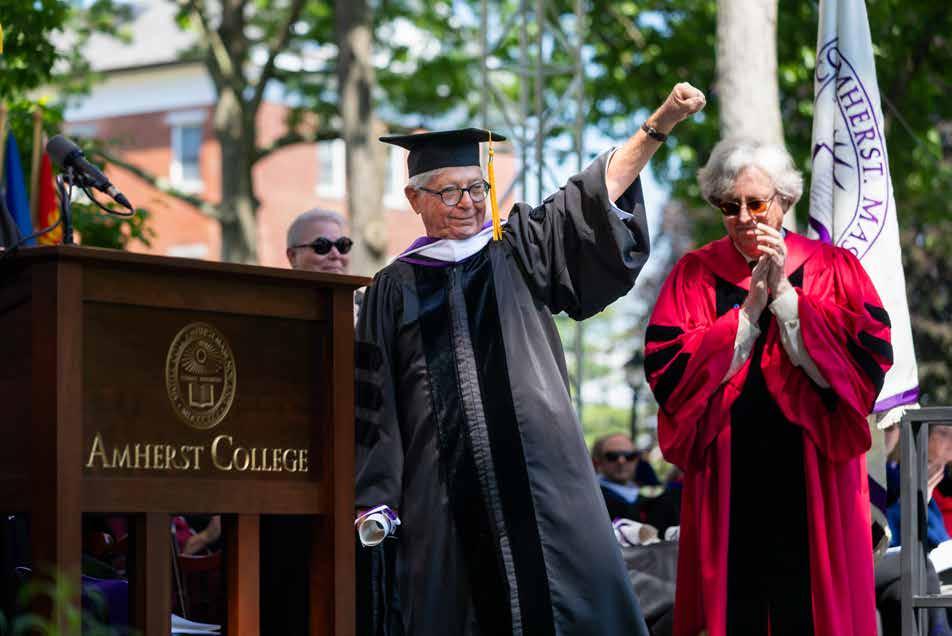
Un Periódico Diferente / A Different Kind of Newspaper
Credit: Maria Stenzel / Amherst College
June 2024 Volume 20 No. 7
Foto del Mes / Photo of the Month

Remembering our June 2015 Edition
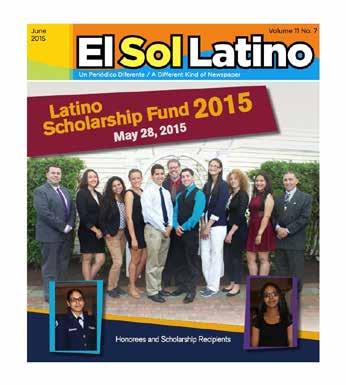

TINTA HOT CALIENTE INK
According to the Pew Research Center, household incomes vary widely among Hispanic groups In 2021, the median household income for Hispanics in the U.S. was $59,000, below the overall U.S. median of $67,800.
Among Hispanic origin groups, Argentines had the highest median household income at $80,000, followed by Costa Ricans at $76,000 and Spaniards at $74,000. Hondurans and Dominicans had the lowest median household incomes, at $50,000, followed by Puerto Ricans and Guatemalans, with $52,000.
Source: Pew Research Center analysis of the 2021 American Community Survey (1% IPUMS)
contents
2 Foto del Mes /Photo of the Month Remembering our June 2015 Edition
3 Portada / Front Page
Alexis Massol González Honored at Amherst College’s Commencement
4 The Carlos Vega Fund for Social Justice 2024 Grants Recipients
5 Padres de Crianza Bridan Amor y Comprensión
6 HCC honors Professor Vanessa Martínez for Equity Work
7 Educación / Education
UPR Río Piedras among NASA Awardees
8 STCC IT Academy Creates Career Opportunities for Non-Traditional Students
9 Literatura / Literature
Con la Música a Otra Parte: La hija de Lola
12 Libros / Books
The Routledge Companion to Latine Theatre and Performance
The Puerto Rico Reconstruction
Administration: New Deal Public Works, Modernization, and Colonial Reform
13 Good Boys, Bad Hombres - The Racial Politics of Mentoring Latino Boys in Schools
Mother Island - A Daughter Claims Puerto Rico
14 Deports / Sports
Springfield Old Timers Softball League
Holyoke Old Timers Softball League
Un podcast sobre la historia del archipiélago de Puerto Rico y el Caribe
Conversaciones con expertos sobre el tema y personalidades de interés. Con el historiador público Ramón A. González-Arango López.
¡Nuevo episodio todos los jueves! ¡Comparte y disfrútalo!

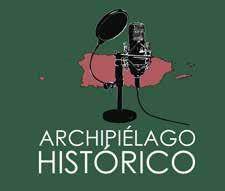
Editor Manuel Frau Ramos manuelfrau@gmail.com 413-320-3826
Assistant Editor Ingrid Estrany-Frau
Art Director Tennessee Media Design
Business Address El Sol Latino P.O Box 572 Amherst, MA 01004-0572
Editorial Policy
El Sol Latino acepta colaboraciones tanto en español como en inglés. Nos comprometemos a examinarlas, pero no necesariamente a publicarlas. Nos reservamos el derecho de editar los textos y hacer correcciones por razones de espacio y/o estilo. Las colaboraciones pueden ser enviadas a nuestra dirección postal o a través de correo electrónico a: info@elsollatino.net.
El Sol Latino welcomes submissions in either English or Spanish. We consider and review all submissions but reserve the right to not publish them. We reserve the right to edit texts and make corrections for reasons of space and/or style. Submissions may be sent to our postal address or via electronic mail to: info@elsollatino.net.
El Sol Latino is published monthly by Coquí Media Group. El Sol Latino es publicado mensualmente por Coquí Media Group, P.O Box 572, Amherst, MA 01004-0572.
2
Founded in 2004 n Volume 20, No. 7 n June 2024
por MANUEL FRAU RAMOS
Alexis Massol González Honored at Amherst College’s Commencement by
Alexis Massol González, co-founder with his wife, Tinti Deyá Díaz, of the Casa Pueblo organization in Puerto Rico, received an honorary Doctor of Letters Degree from Amherst College in Massachusetts on May 26, 2024. Massol González was honored for his activism and struggle for more than four decades to protect natural resources, promote community development, and promote self-governance through grassroots and collective work.
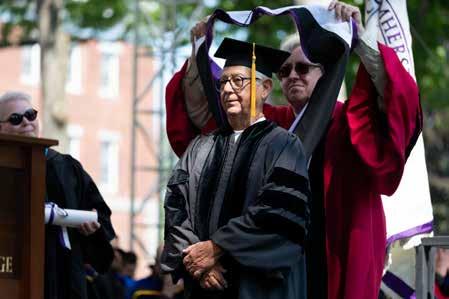
Alexis Massol González is a civil engineer and environmentalist. He obtained a degree in Civil Engineering from the University of Puerto Rico at Mayagüez in 1965. In 1980, he and his wife, established Casa Pueblo, a non-profit environmental watchdog community-based organization in Adjuntas, a small mountainside town in the southcentral portion of the island.
In the information published by Amherst College about the event, the press release detailed that “Casa Pueblo is aimed at protecting the area’s natural resources and implementing far-reaching solutions that benefit the environment and the people who live in it. Under Massol González’s leadership, Casa Pueblo administers a Forest School of approximately 150 acres, an income-generating coffee plantation that produces 100 percent arabica seeds for the group’s signature Madre Isla Coffee, an ecological guesthouse, a solar-powered radio station, a solar-powered movie theater and a growing solar grid that functions as a cooperative.”
During the ceremony, the President of Amherst College, Michael A. Elliott, highlighted his career of community struggle and environmental protection. “With this recognition, we wish to celebrate his extraordinary dedication to envisioning and promoting an alternative to the global status quo. “The economically sustainable, self-governed community you have cultivated for more than four decades at Casa Pueblo, your strong prioritization of human and cultural values, and your radical commitment to environmental stewardship inspire us all at Amherst College,” Elliott said.
Massol González said, “This is a recognition of all the efforts that Casa Pueblo has made, for the past 44 years, to break with the status quo.” During the event, Massol González was accompanied by one of his sons, Axel Massol Deyá.
MANUEL FRAU-RAMOS

In 2002, he was awarded the Goldman Environmental Prize for his efforts in protecting Puerto Rico’s mountain forests from threats from the government of Puerto Rico-approved plans to create an open-pit mining project that would impact large areas of the central region in four municipalities, including Adjuntas.
Massol González has written several books, including “Casa Pueblo Cultiva Esperanzas” in 2019. In 2021, when a Puerto Rican Professor from Amherst College, Paul Schroeder Rodríguez, visited Casa Pueblo, he suggested that the Amherst-based educational institution translate the book into English. This marked the beginning of the relationship between Amherst College and Casa Pueblo.
The English version of “Casa Pueblo: A Puerto Rican Model of SelfGovernance” was published in 2022 and translated by Amherst College Professors Ashwin Ravikumar, Assistant Professor of Environmental Studies, and Schroeder Rodríguez, Professor of Spanish and Latinx and Latin American Studies.
This collaboration reinforces Massol González’s vision of the importance of community and academic partnership. During his recent visit to Amherst College, he reiterated this vision when he stated. “And I also made an invitation to the university so that we could participate together, academia and community, seeking a better Puerto Rico and an alternative country.”
Massol González has just finished a new document focused on the theory and practice of self-decolonization that Casa Pueblo has long promoted. The book, “Casa Pueblo Builds an Alternative Community Model to the Colonial System in Puerto Rico,” was presented to the Amherst College audience as his “community thesis.” The text is bilingual (Spanish and English).
Other honorary doctorate recipients at Amherst College’s Class of 2024 graduation were composer and jazz pianist Jason Moran, novelist Lauren Groff, civil rights advocate Junius Williams, scholar Elaine Kim, and Ingrid Daubechies, the first woman to receive the Mathematics Prize of the National Academy of Sciences.
Portada / Front Page 3 El Sol Latino June 2024
Credit: Maria Stenzel / Amherst College
The Carlos Vega Fund for Social Justice 2024 Grants Recipients
The Carlos Vega Fund for Social Justice (CVFSJ) awards ceremony for this year was held on Friday, May 10th, at the Wistariahurst Museum in Holyoke. A total of 13 grants were awarded, celebrating the fund’s 13th year of supporting financial organizations in the Holyoke and surrounding area that stand out for fighting injustice, oppression, and poverty.
These grants aim to address injustice, oppression, and poverty in the greater Holyoke area, particularly for those marginalized by our society. They fund initiatives that foster change and promote empowerment, self-help, and economic, political, and social justice.
This year, the Carlos Vega Fund for Social Justice increased the grant amount to up to $2,000, used for a specific, one-time program or project that focuses on the fundamental primary causes of injustice, fosters change, and promotes self-help and empowerment.
The 2024 awardees are:
• Holyoke Health Center
$500 funding support for the Banned Graphic Novel project
• The Gray House
$2000 funding support for after-school technology support
• Indian Orchard Citizens Council
$500 funding support for community gathering events
• Nueva Esperanza
$1000 funding support for cultural art project for Noche De San Juan event
• Common Wealth Murals
$1900 funding support for community paint events for community mural
• Scarlet Sock
$400 funding to support upgrade technology
• The Performance Project
$500 funding support for Family and Community celebration event
• Community Legal Aid
$2000 funding support for the Family Preservation Project
• Generational Seeds
$600 funding support for garden and kitchen supplies for programming
• Resilient Community Arts
$1000 funding to support an art project for Holyoke Pride Festival
• Pa’lante, transformative Justice
$1558 funding support for youth-led mural project
• Alianza DV Services (formerly Womanshelter /Compañeras)
$1040 funding for a support group for undocumented domestic violence survivors
• African American Female Professor Award Association
$500 funding support toward yearly recognition event
In addition to its grant cycle, the Carlos Vega Fund is organizing a Fall event on October 19th at Fame Eatery & Lounge in Holyoke. During this event, the 2024 Social Justice Award recipient, and new board members will be announced.
Carlos Vega was an ardent activist for civil rights, community-building, education, healthcare, and social justice in Holyoke. The donordesignated fund was started in 2010 to honor Carlos on his 60th birthday and continue his 40-year legacy by awarding small grants to nonprofit organizations through an annual competitive process.
By MANUEL FRAU RAMOS
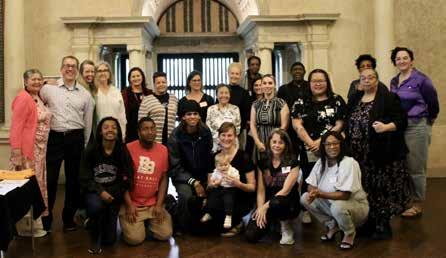
The members of the Carlos Vega Fund for Social Justice Advisory Board are Debra Vega, Aaron Vega, Courtney Joaquin, Liz O’Dair, Idali Torres, Jane Frey, Miguel Arce, Iris Crespo, Tom Hidalgo, Amber Black, Orlando Isaza, Carey Baker, and Sylvia Galván.
To donate online: The Please Donate Today button below is a link to the Community Foundation donation form. When asked to direct your gift, select Another Named Fund, enter the amount you wish to donate, scroll down to the Carlos Vega Fund for Social Justice and Community Service, and select it. To donate by check: Make the check out to the Community Foundation of Western Massachusetts, put Carlos Vega Fund for Social Justice and Community Service in the memo line, and mail it to: Community Foundation of Western Massachusetts • 333 Bridge Street • Springfield, MA 01103.
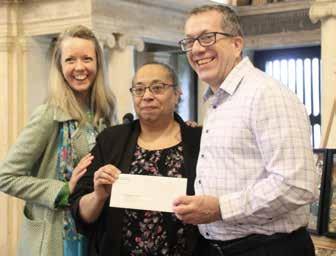
Isaza, Sylvia Galván, and Kayla RodríguezExecutive Director Nueva Esperanza
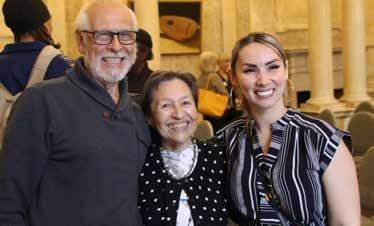
Portada / Front Page 4 El Sol Latino June 2024
Grantees and Board Members
Debra Vega, Carmen Nieves - Executive Director Alianza DV Services, and Aaron Vega
Orlando
Portada / Front Page
Padres de Crianza Bridan Amor y Comprensión
SPRINGFIELD, MA | GÁNDARA CENTER | Cada mayo se celebra el mes de la concientización sobre lo que conlleva ser padres de crianza, quienes experimentan un sinnúmero de emociones tales como alegrías y frustraciones. El proceso de crianza requiere compresión y sobre todo, mucho amor. Los padres de crianza del Programa de Cuidado de Crianza Intensivo de Gándara Center desearon compartir sus opiniones y algunos consejos para aquellas personas que estén considerando convertirse en padres de crianza con el apoyo del Programa.
Aquí sus consejos y comentarios:
Jackie Turner: 26 años de experiencia como madre de crianza
“Tenga mucha paciencia, trate de comprender las necesidades de los niños y trate de hacer la diferencia en la vida de cada niño.”
Marquita Arnold: 1 año de experiencia como madre de crianza
“Asegúrese de no tener influencias externas o personas alrededor de los niños que puedan intentar interrumpir lo que esté sucediendo con sus hijos de crianza.”

Brandi Gamble: 26 años de experiencia como madre de crianza
“No todo el mundo puede hacer esto… se requiere de mucha paciencia y coordinación de todas las personas que vienen a la casa de uno a chequear los niños. Yo he continuado siendo madre de crianza gracias al apoyo de Gándara Center, todos han sido muy buenos.”
Kerline Jacques: más de 7 años como madre de crianza
“No deberías convertirte en padre de crianza si no vas a tener paciencia y cuidar a los niños como si fueran tuyos. También, yo siempre le digo a la gente que amo a mi equipo de ayuda de Gándara porque siempre están ahí para apoyarme.”
Latasha Lowe: en total 16 años, 7 años con Gándara Center

“Si tu corazón está interesado en ello, hazlo. No lo dudes, no lo pienses, solo hazlo.
No se trata solo de los padres de crianza, o solo del programa, es un esfuerzo de equipo que todos debemos hacer juntos por los niños.”
Faye August: más de 16 años como madre de crianza
“A lo largo de las diferentes experiencias de estos niños es importante contar con la agencia (personal del programa de cuidado de crianza) porque es la persona intermediaria que puede proporcionar información sobre los antecedentes del niño y ayudarle a saber lo que debe o no hacer. Asegúrese de tener tiempo en su vida para esto porque los niños toman mucho tiempo,
ellos toman gran parte de su vida. Asegúrese de saber con qué grupo de edad desea trabajar y de que puede satisfacer las diferentes necesidades de los niños que se ubican en su hogar. Ahora yo soy madre adoptiva de un niño autista y tuve que aprender mucho sobre cómo apoyar a un niño con sus necesidades específicas. Yo la amo mucho, pero definitivamente ha sido un desafío y la agencia ha podido ayudar con eso.”
Angela Smith: Fue proveedora de relevo y madre de crianza de respaldo para Faye durante 14 años, y ha tenido sus propios hijos de crianza durante 3 años.
“Cuando comencé, yo solía llamar a la agencia casi todos los días mientras intentaba resolverlo y aprender a manejar cada una de las necesidades de los niños y ahora apenas tengo que llamar porque ahora los conozco. La agencia es en realidad todo lo que los padres de crianza tienen y (la agencia) brinda mucho apoyo.”


Luis Molina: 20 años como padre de crianza
“En medio de tantas dificultades y desencantos también hay alegría y hay que sentarse un momentito y pensar en esos niños y lo que ellos han pasado. Sin el apoyo del programa esto no funcionaría, se necesita el apoyo y los consejos que ellos dan en el programa. Hay veces que me frustro y hablamos y vuelve y cae en sitio. Yo no podría trabajar sin el apoyo de Gándara.”
Tanisha Andino: casi 1 año como madre de crianza
“No te rindas con los niños, no los decepciones, ya los han decepcionado bastante.”
Si desea convertirse en un padre de crianza u obtener más información acerca del programa de Cuidado de Crianza Intensivo de Gándara Center visite la página web https://www. gandaracenter.org/intensive-foster-care.

5 El Sol Latino June 2024
Publish your bilingual ad in El SolLatino! Call us today at (413) 320-3826.
HCC honors Professor Vanessa Martínez for Equity Work
HOLYOKE, MA | HOLYOKE COMMUNITY COLLEGE | May 21, 2024
– Holyoke Community College Anthropology Professor Vanessa
Martínez of Holyoke is the recipient of the inaugural Dr. Christina Royal Equity and Action Award, named in honor of HCC’s former president. The award was created by the HCC Board of Trustees to recognize a full-time member of the faculty or staff who, “through their efforts on and off campus, supports a culture of transformational justice, works to remove barriers for historically marginalized groups, improves cultural competency through dialogue and education, exhibits leadership and best practices for social equity, or makes the larger community a more just and equitable place to live.”
As HCC’s fourth president, Royal broke many barriers as the first woman, first bi-racial, and first queer person to hold that position. She retired in July 2023.
The award was presented to Martínez by Royal’s successor, President George Timmons, during the annual faculty and staff awards ceremony May 15.
Her colleagues refer to Professor Martínez as an “equity pioneer at HCC,” Timmons said, “sharing knowledge and working hard to open doors to traditionally underrepresented students.”
Martínez is chair of the college’s Community Based Learning Program and former chair of the HCC Honors Program. Born in San Sebastian, Puerto Rico, she holds a bachelor’s degree from Columbus State University, a master’s degree from Georgia State University, and a Ph.D. from the University of Massachusetts.
In 2020, she received the Elaine Marieb Award for Teaching Excellence, HCC’s highest faculty honor. In 2022, she received the Thomas Ehrlich Civically Engaged Faculty Award from Campus Compact, a national coalition of colleges and universities committed

to the public purposes of higher education.
She is also a past recipient of the “Latino Teaching Excellence Award” from then Governor Deval Patrick (2011), and a leadership fellowship from the American Anthropological Association (2015).
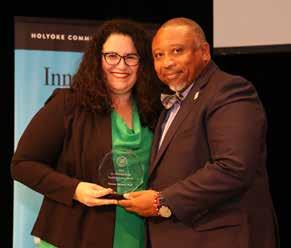
Off campus, Martínez is the founder of the Springfield-based Women of Color Equity Initiative, a nonprofit that aims to increase access and resources that enhance the health and well-being of women of color.
She has been teaching at HCC since 2006.
“This award is not mine alone,” Martínez said. “I work in community, and collaboration is how we thrive. … Receiving this award motivates me even more to continue my transformative justice and equity work.”
Martínez noted that during her interview for a teaching position at HCC 18 years ago, she told the vice president of academic affairs she was the “do good in the world type.” The VP replied, “So are we.”
“I knew then this was where I needed and wanted to be,” Martínez told the audience gathered for the awards ceremony in the Leslie Phillips Theater. “Because together we can make a significant impact on making this world a better place before we leave it.”
LifePath, Inc. a nonprofit dedicated to supporting the well-being of older adults, individuals with disabilities, and caregivers. www.lifepathma.org
In this full-tim e (35 hr/wk), hybrid role based in Greenfield, as a member of the management team , you’ll be responsible for administration, coordination, and development of HR func tions including: staffing, performance management, compliance, benefits/leaves, and employee relations support. If you have at least 3 years’ experience as an HR generalist, PHR or SPHR certification or equivalent education/exp erience, and excellent diplomacy and communication skills, this is an amazing opportunity for you!
Additional qualifications: Highly organized and detail oriented. Experience with supervision, policy development, HRIS/ATS (ADP a plus), and payroll Google Suite skills, proficiency with Microsoft Office Suite and HR related databases/systems. Responsive and solution-oriented with ability to balance organizational objectives with employee advocacy Ability to efficiently balance concurrent and shifting priorities.
Compensation and Benefits: Hiring pay range: $60-65K commensurate with experience. Excellent benefits including medical, dental, vision, life insurance, 401k, generous paid time off, HRA, FSA, EAP, and 6% pay differential for bilingual individuals
The college also presented the Elaine Marieb Faculty Chair for Teaching Excellence award to English Professor Fred Cooksey of Easthampton; the Idelia Smith Adjunct Faculty Award to Jessica Strano-Rex, clinical nursing instructor from Suffield, Conn.; the Outstanding Professional Staff Award to Mayra Diaz, senior executive assistant for student and academic affairs from Springfield; the Outstanding Classified Staff Award to Derek Swist, chemistry lab technician from Granby, Mass.; and the Outstanding Part-Time Staff Award to Susan Reade, literacy specialist and ESOL instructor from Northampton.
Apply at and find additional information at https://lifepathma.org/about/job -opportunities/, or send your cover letter and resume to hr@lifepathma.org
All qualified individuals are encouraged to apply ! EOE/AA
6 El Sol Latino June 2024 Portada / Front Page
Professor Vanessa Martínez accepting the inaugural Dr. Christina Royal Equity and Action Award from HCC President George Timmons
Seeking Associate Director of Human Resources to join our caring and compassionate team!
Educación / Education
UPR Río Piedras among NASA Awardees
WASHINGTON, DC | NASA Headquarters | May 10, 2024 - NASA is awarding approximately $45 million to 21 higher-education institutions to help build capacity for research. The awards were made possible through the Minority University Research and Education Project Institutional Research Opportunity (MIRO) and Established Program to Stimulate Competitive Research (EPSCoR) grants, which are funded by the agency’s Office of Science, Technology, Engineering, and Mathematics (STEM) Engagement.
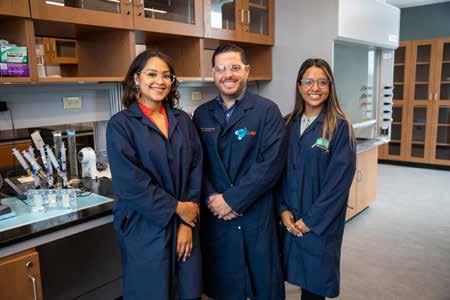
“NASA’s Minority University Research and Education Project Institutional Research Opportunity and Established Program to Stimulate Competitive Research awards help institutions raise their technological bar,” said Torry Johnson, deputy associate administrator of STEM Engagement Programs at NASA Headquarters in Washington. “When institutions enhance their capabilities and infrastructure, they become more competitive in their research, which opens doors to valuable experience and opportunities.”
Established Program to Stimulate Competitive Research (EPSCoR) Award
NASA establishes partnerships with government, higher education, and industry to create lasting improvements in research infrastructure and capacity for specific states or regions, while enhancing its national research and development competitiveness. The program is directed at those jurisdictions that have traditionally not participated in competitive aerospace and aerospace-related research activities.
NASA will award 14 institutions up to $750,000 each over the course of a three-year period of performance. The awarded institutions and their projects are:
• University of Mississippi in University – Development of a Lagrangian Stability Analysis Framework for High-Speed Boundary Layers
• University of Alabama in Huntsville – Testing the functionality and performance of a large area detector for STROBE-X
• Louisiana State University in Baton Rouge – Colloidal Assembly: Understanding the Electric Field Driven Assembly of Colloids and its Applications (Science Mission Directorate)
• West Virginia University in Morgantown – Science Mission Directorate: Bringing Gravitational-Wave Astronomy into the Space Age: Next-Generation Waveform Modeling of Black-Hole Binary Coalescences for Laser Intererometer Space Antenna Data Analysis
• University of Puerto Rico in San Juan – NASA EPSCoR: Space Technology Mission Directorate/Jet Propulsion Laboratory: Advancing High-Energy, Cycle-Stable Sulfur-Based Batteries for NASA Space Missions: An Integrated Framework of Density Functional Theory, Machine Learning, and Materials Innovation
• Desert Research Institute, Reno, Nevada – NASA’s Ames Research Center in Silicon Valley, California: Prospecting and Pre-Colonization of the Moon and Mars using Autonomous Robots with Human-In-The-Loop
• Oklahoma State University in Stillwater – A.7.4.2 Biosignature Detection of Solar System Ocean Worlds using Science-Guided Machine Learning
• Iowa State University in Ames – Johnson Space Center, Ames Research Center: Non-GPS Navigation System Using Dual Star/ Planetary Cameras for Lunar and Deep-Space CubeSat Missions
• University of Alaska Fairbanks in Fairbanks – NASA’s Glenn Research Center in Cleveland: The Alaska – Venus analog: synthesizing seismic ground motion and wind noise in extreme environments
• University of the Virgin Islands in Charlotte Amalie – University of the Virgin Islands Etelman Observatory in the Era of Time Domain and MultiMessenger Astronomy: Preparing for a New Era of Science Productivity
• University of Hawaii at Manoa in Honolulu – Cubesats for Climate Change Detection of Transient Greenhouse Gas Emissions
• University of Idaho in Moscow – Science Mission Directorate and Goddard Space Flight Center: Improving Global Dryland Streamflow Modeling by Better Characterizing Vegetation Use of Deep-Water Resources Using NASA’s Gravity Recovery and Climate Experiment/ Gravity Recovery and Climate Experiment Follow-On, SWOT, and Land Information System
• University of Arkansas in Little Rock – AR- III-Nitride Ultraviolet Laser Diodes for Harsh Environments, Space Based Communications, and Remote Sensing (Space Technology Mission Directorate)
• South Dakota School of Mines and Technology in Rapid City – Science Mission Directorate: High Spatial-Temporal Resolution Soil Moisture Retrieval using Deep Learning Fusion of Multimodal Satellite Datastreams
Both awards were made through NASA’s Office of STEM engagement solicitations. They promote STEM literacy to enhance and sustain the capability of institutions to perform NASA-related research and education, which directly supports the agency’s mission directorates.
7 El Sol Latino June 2024
The team of researchers from the University of Puerto Rico-Río Piedras is comprised of doctoral students Liz Santiago-Martoral, on the left, Professor Eduardo Nicolau, and Alondra Rodríguez-Rolón. Credit: NASA
Publish your bilingual ad in El SolLatino! Call us today at (413) 320-3826.
STCC IT Academy Creates Career Opportunities for Non-Traditional Students
SPRINGFIELD, MA | SPRINGFIELD TECHNICAL COMMUNITY
COLLEGE | May 9, 2024 – The IT Academy at Springfield Technical Community College is a “life-changer” for Juan Burgos, a Springfield resident.
Echoing comments from other students enrolled in the IT Academy at STCC, Burgos said he’s excited to be working toward certifications that are tickets to good-paying jobs in the cybersecurity industry. Students in the first cohort held in spring 2024 are enrolled for free, supported by a grant.
“This opportunity came up, and I jumped on it,” Burgos said one Wednesday afternoon at STCC, where he was seated in a classroom with the other students. “This is a life-changer. This is going to change everything.”
Launched on March 12, the IT Academy’s Pathway to the Cybersecurity program at STCC supports non-traditional students who are new to Information Technology (IT) and computer technology. They are learning skills that set them up for entry level IT careers. Students also have the option of moving into the two-year Cybersecurity Program, which can lead to an associate degree.
The comprehensive curriculum combines theoretical knowledge with practical, hands-on experience. The program includes a part-time option running classes three evenings a week for 9 months. A summer and winter boot camp will be offered that runs for 10 weeks (full-time day program), which allows students to attend classes five days a week.
Eventually, students who follow the cybersecurity track will use The Richard E. Neal Cybersecurity Center of Excellence in Springfield, scheduled to open later this year. The facility will serve as a dynamic hub for advancing cybersecurity awareness, education, innovation and battling global security threats.
The 6,000-square-foot facility will include a cyber range, which is a simulated training environment, and security operations center, which is envisioned as a support service for Massachusetts municipalities, as well as regional businesses, to detect cybersecurity events in real time and respond quickly.
STCC offers a number of training opportunities through its Workforce Development division, from a free program that prepares students to be paraeducators in Springfield to the Hampden Prep program, which provides basic computer skill training.
“We are excited to offer a wide range of training programs that help nontraditional students pursue their dream careers,” said Gladys Franco, assistant vice president of Workforce Development at STCC. “Our goal is to make it easier for people looking to get started in a career. We’re particularly excited about the IT Academy, which provides a pathway to build a career in IT and cybersecurity. It’s a growing field with many opportunities.”
Students in the Pathway to Cybersecurity Program are learning in person in a classroom taught by April
Bellafiore, Cruz Antonio Pagan, and Andrew Collins, a professor for the Cybersecurity Program at STCC.
Students also participate in interactive computer training labs focused on obtaining CompTIA certifications, which are industry standards that IT professionals can use to demonstrate their knowledge and skills to potential employers.
The training is “beginner friendly,” Bellafiore said. The course provides students with skills to be successful in the Cybersecurity Program and in the workforce.
Students enrolled in the course come from a variety of backgrounds. Shelby Kiendzior of Easthampton graduated from STCC with a degree in Dental Hygiene and worked in the field, but plans on changing her career.
“I will be getting four certifications in different IT related courses,” Kiendzior said. “This course will set me up for where I want to go in IT or tech.”
Luz Padilla, who is from Puerto Rico and now lives in Chicopee, called the IT Academy “the best thing that’s ever happened to me.”
“I love computers,” she said. “I love troubleshooting and I would like to work in homeland security someday. The class is amazing. The teacher’s great. I got a lot of encouragement from everybody here, especially Miss April.”
She referred to the instructor April Bellafiore, who has taught inperson and online courses for over 20 years.
“I am excited to work with the IT Academy students to prepare them for a dynamic and exciting industry,” Bellafiore said. “We also encourage students to continue their education and apply for the STCC Cybersecurity two-year degree program. In today’s digital age, every industry relies on IT expertise. It’s a growing field with many rewarding and diverse job opportunities.”

8 El Sol Latino June 2024 Educación
/ Education
April Bellafiore teaches the IT Academy’s Pathway to the Cybersecurity program at STCC.
Con la Música a Otra Parte: La hija de Lola
Segundo cuento de la serie Con la música a otra parte por JOSÉ EDGARDO CRUZ FIGUEROA
“!Dios mío, qué barrigota!, ¿qué le ha pasado a la hija de Lola?” La pregunta se la hizo Carmen Irizarry a su amiga Abigail Mercado cuando salían de J.C. Penneys en Plaza Las Américas, una tarde de diciembre del 1972. Era una pregunta retórica. La respuesta era autoevidente. La causa de la barriga inmensa de Iris, la hija de Dolores Sepúlveda, era innombrable excepto como un cuchicheo en son de bochinche. Lo único que podía ser causa de sorpresa o confusión era la referencia a “la hija de Lola”, pues la nombrada podía ser Iris o Lola, las dos hijas de Dolores, a quien se le conocía como Doña Lola para distinguirla de su hija menor. Después que dieron cuenta del charlatán que le había dado un puño a ella en el 1960, la noche del senior prom de su clase, Lola Sepúlveda, la segunda hija de Dolores, y Arturo Martínez tuvieron un romance fugaz. Lola había quedado intrigada cuando Arturo retó al charlatán a que le volviera a dar a “su Lola” ahora que no estaba sola. ¿De dónde salía ese pronombre posesivo?
Durante el tiempo que habían pasado juntos, como vecinos en la calle 7, bajando por la calle hasta la Asenjo por tres años y caminando por la avenida Borinquen hacia la Einstein por otros tres, Arturo jamás le había dado indicios de que ella le gustara. Cuando ella hizo la movida necesaria, él la aceptó con gusto, confesándole que a menos que una mujer se le declarara, él podía vivir toda la vida deseándola sin atreverse a dar el primer paso.
Para Arturo, Lola fue la antesala de Marina Fuentes, pero con ella no se comparaba. Marina estaba fuera de serie. Arturo la conoció en el 1970, cuando ambos eran miembros del Movimiento Pro Independencia y ella estaba casada. Luego ella se divorció y entonces entablaron el romance que trastornó a Arturo por muchos años.
En el 1961, cuando Arturo y Lola comenzaron su romance, los dos eran menores de 21 años, dos capullos listos para florecer, movidos más por las hormonas de sus cuerpos que por la razón sosegada que hace que una pasión perdure aunque transformada. El romance terminó en nada. Por meses se besuquearon en la penumba del Imperial, en la avenida Eduardo Conde, mientras la pantalla mostraba peleas de Kung Fu o romances mexicanos, pero se quedaron estancados a nivel de besos y caricias que los humedecían pero más nada. Ambos vivían con su padres y en sus casas siempre había gente pululando. En casa de pobres, la privacidad no era un derecho pues un derecho existe solo si hay condiciones para disfrutarlo. Lola se fue para Nueva York y Arturo se quedó con las ganas, hasta que conoció a su primera esposa. Cuando Dolores tuvo a su primera hija, quiso que se llamara igual que ella. Su marido no estaba de acuerdo. Él prefería el nombre de Iris, pues le quería rendir homenaje a su abuela haciendo que su nombre perdurara más allá de su muerte, que ya se aproximaba. “Abuela, Dolores tuvo una nena y le vamos a poner Iris de nombre”, le dijo mientras ella agonizaba. Su rostro se suavizó brevemente pero estaba tan incapacitada que no podía hablar. Murió contenta pero no tuvo oportunidad de conocer a su nieta homónima.


Ya satisfecho tras haber impuesto su voluntad, cuando llegó su segunda hija, accedió al pedido de su mujer y la llamaron Lola, lo cual satisfizo a Dolores pero luego fue causa de muchas confusiones, especialmente cuando Iris salió encinta. Así, cuando Carmen Irizarry hizo su pregunta retórica, Abigail Mercado exclamó con asombro que qué hija de Lola si Lola se había ido para Nueva York poco después de graduarse de la Einstein diciendo que se iba a quedar por allá. “Ella salió con Arturo Martínez en el 1961, pero después que ella se fue él se casó y tuvo un hijo a los ocho meses de la boda,” sentenció. “Después se emborujó con otra que se llamaba Marina y terminó trastornado”. Abigail hablaba sin titubeos porque sabía de lo que hablaba. Carmen le contestó: “pues mírala”, y entonces Abigail comprendió que era Iris a quien Carmen señalaba. “Acuérdate que Arturo también salió con Iris pero eso no duró na”, dijo Carmen. Cuando Lola se fue para Nueva York, Arturo se puso triste. Lamentaba perder a la jeva que lo había iniciado en los escalofríos del placer sensual. Había tenido que botar varios pantalones que no se atrevía mostrarle a su madre para que los lavara pues estaban marcados por el flujo explosivo que a veces le provocaban las caricias de Lola. Cuando su madre le preguntaba que dónde estaba el pantalón tal o el pantalón más cual, cambiaba la conversación. Su madre sospechaba algo, pero no se imaginaba que Arturo estuviese botando ropa por una razón tan estúpida como la de evitar sentirse abochornado frente a su madre al ella percatarse de que ya era un hombre. Arturo sabía que una cosa era que ella comprendiera que ese momento había llegado al verlo con bigote y afeitándose y otra completamente distinta y embarazosa que lo hiciera al notar aquellas manchas con textura de almidón en sus pantalones y se lo imaginara masturbándose.
A los tres meses de la partida de Lola, Arturo notó que Iris lo miraba distinto. Iris le llevaba un año a Lola y por ende estaba un año más adelantada en la escuela. A la Asenjo caminaba sola. En la Einstein era parte de Las Flamas, el grupo de muchachas precoces en materias rumbáticas y sexuales, y caminaba con ellas después que se encontraban en la Placita Barceló. Una de Las Flamas era Mariana Romero, hija de Carlos Romero Barceló. Ella e Iris eran íntimas. Barceló era dueño de una ferretería en Barrio Obrero y esa hija era un dolor de cabeza. No podía evitar especular sobre lo que pensaban sus clientes acerca de su flamífera hija cuando iban a la ferretería a comprar martillos, serruchos o clavos. Cuando la veía con Iris se le caldeaban los ánimos. Durante los años de la Einstein ignoró el comportamiento de su hija y se hacía de la vista larga cuando su mujer le decía que tenía que sacarla del grupo ese de Las Flamas. Después de graduarse en el 1959, Mariana estuvo dando bandazos por varios años hasta que consiguió trabajo en El Cotorrito, el club de transvestistas (ellos se autodenominaban “transformistas”) de Juan de Capadocia Rodríguez Lozada, conocido continued on next page

9 El Sol Latino June 2024 Literatura / Literature
Literatura / Literature
Con la Música a Otra Parte: La hija de Lola
continued from page 9
como Johnny Rodríguez, pero mejor conocido como el hermano mayor del cantante puertorriqueño Tito Rodríguez. Después de una exitosa carrera como bolerista, Johnny inauguró el club por ahí por el 1960, inspirado por sus experiencias en varios clubes de transformistas en Nueva York y Miami.
El Cotorrito estaba en la calle 1 de Barrio Obrero en una modesta estructura que en su pared exterior lo anunciaba con un mural que decía “A Gay Place for Gay People.” Mariana trabajaba en la barra. Estuvo presente la noche del debut de una de las estrellas del club, Rafael Cardona, a quien Rodríguez bautizó como Raffaelo, y después se le veía asiduamente con él por todo Santurce. Las noches en que ambos estaban libres, se iban de bar en bar hasta el amanecer y en más de una ocasión Mariana se quedó con él en su apartamento cerca del nuevo local del club en la avenida Ponce de León. Cuando Rodríguez decidió publicar un folleto de publicidad que tituló Souvenir of The Little Parrot, le pidió a Mariana que posara para la portada. Allí estaba ella, semidesnuda, con guantes que le llegaban a los codos, portando unos stilettos de seis pulgadas y con una corona de plumas en la cabeza que la hacía parecer como un pavo real. Johnny quería usar a una de sus estrellas, Mr. Eric, para la portada, pero optó por Mariana porque ella tenía el culo más grande. Barceló y su esposa estaban lívidos pero no hicieron nada. Romero Barceló estaba envuelto en la creación del Partido Nuevo Progresista pero todavía no era un miembro prominente. Incluso después de la fundación del partido en el 1967, cuando empezó a despuntar en el liderato de la organización, el descontento que Mariana le causaba por trabajar en El Cotorrito permaneció enterrado en su cerebro como la lava de un volcán antes de explotar. Su límite llegó cuando salió electo alcalde de San Juan en el 68. Ya no podía permitir que lo asociaran con ese club de pervertidos en el que su hija trabajaba. La obligó a renunciar y la forzó a que se fuera de Puerto Rico a vivir con familares de su esposa en Long Island. Iris, que nunca se había interesado en la política, se volvió independentista nada más que para expresar su antipatía por el padre
de Mariana. Años después, cuando ya se había reformado, Mariana fue electa a la legislatura estatal. Entonces nadie hizo mención de su historia con Johnny Rodríguez o de su membresía en el grupo de Las Flamas. Ella tampocó reanudó su amistad con Iris quien, además de independentista, seguía siendo igual que cuando estaba en el grupo: coqueta, provocadora, transgresora y aventurera, una mujer a quien le gustaba meter mano. Como había dicho el cantante y compositor Raúl Marrero en la canción que le rindió un torcido homenaje, era “tan bonita muchachita todos la querían tener...” Lo que Marrero no decía era que ella se dejaba tener, excepto que eso estaba implícito en la pregunta que hacía la canción.
Cuando Lola veía a su hermana bailando durante los rumbones de los viernes en la Einstein, la envidiaba al mismo tiempo que se sentía avergonzada. Nadie se atrevía a hablar mal de Iris frente a ella, pero Lola sabía que la gente hablaba. En muchas ocasiones, grupitos de estudiantes enmudecían de repente cuando la veían acercarse. Era claro que se callaban pues era de Iris de quien bochincheaban. Los bochincheros que la denigraban decían que era una suelta, que se acostaba con cualquiera, y los más agresivos decían que era una puta, aunque ella nunca se acostó con nadie por dinero. Eso era peor para muchos, pues hacerlo por puro placer era equivalente a degradación moral, a no tener vergüenza, a ser la perdición de los hombres. Era perderle el respeto al tabú sexual de cuya observación supuestamente dependía nuestra condición de humanos. La verdad es que Iris no tenía vergüenza. No se aborchonaba de su sensualidad y buscaba el placer como el que busca un tesoro perdido. Para ella, el sexo era felicidad y ¿no había dicho Thomas Jefferson que la búsqueda de la felicidad era uno de los derechos inalienables del hombre, y en el caso de ella, de la mujer?
Después que Lola se fue y antes de casarse, Arturo pensaba en Iris con fascinación a la vez que sabía que ella no estaba a su alcance. Su entendimiento de lo que pasaba por la cabeza de las mujeres era fatal. Su intuición era peor que la de un mosquito que, a pesar de no contar con un cerebro desarrollado, sabe aterrizar en la piel precisa para jartarse de sangre.
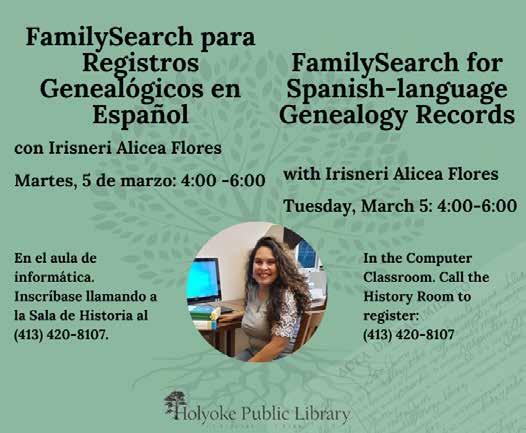
Con Lola fuera de la escena, Iris cambió de actitud y comenzó a acercársele. Entonces él estaba más llenito y se veía más hombre que antes. Arturo le dio la bienvenida con trepidación pues se sentía atraído y repelido por ella. No compartía la actitud de los bochincheros pero pensaba que, como bien lo sugería el epíteto de “mujer suelta”, Iris no iba a ser fácil de amarrar. Su lealtad no era incondicional. Si le gustaba un hombre se lo tiraba y en cuanto se ponía incordio o dejaba de gustarle, lo abandonaba. Eso era tamaño reto hasta para el hombre más bello e interesante, pues la atracción que Iris sintiera no se podía dar por sentada; había que estar pendiente y hacer lo que fuese necesario para echarle gasolina al tanque al menor indicio de que se estaba vaciando. Esa condición hacía que la relación de Arturo con ella estuviese en un estado perenne de tensión. Al principio era excitante porque la tensión surgía de la incertidumbre que la actitud de Iris provocaba, como también de la expectativa de consumar la entrega y la posesión. Eventualmente se convirtió en una carga, en una fuente de nerviosismo, de agobio y de ansiedad. Arturo nunca la llevó al Imperial para continued on next page
10 El Sol Latino June 2024
Literatura / Literature
Con la Música a Otra Parte: La hija de Lola continued
no recordar a Lola. Se guillaban en la marginal frente a la laguna del Condado o al pie de la muralla del Fuerte San Cristobal que quedaba cerca del Capitolio, siempre trazando el contorno de sus intimidades sin llegar a más nada.
Arturo no duró mucho con Iris y terminó casándose con una muchacha más estable de la cual se cansó bien rápido. Entonces se le apareció Marina Fuentes, quien le abrió las puertas a un mundo de pasión que antes no pudo imaginar. Iris le mostró el camino, su esposa le guió los pasos y Marina lo recibió cuando al fin llegó al sitio que buscaba. Iris siguió del tingo al tango con los hombres que llegaban a su vera hasta que uno de ellos le alteró la vida de rabo a cabo. Cuando la canción “La hija de Lola” salió por la radio, Arturo sabía de quién se trataba. El hombre que preñó a Iris no era del vecindario. Venía a Barrio Obrero de Trastalleres a vender drogas. Su reputación era igual a la de su comunidad a pesar de que Trastalleres era un arrabal donde había tanta o más gente decente que gente mala, deshonesta, sinvergüenza o criminal. De ahí había salido Andy Montañez y él siempre hablaba de su barrio con orgullo. Raúl Marrero conocía al maleante y al verlo paseando con Iris se imaginó lo peor: que la sonsacaba para que lo ayudara a mover su producto o que le daba droga para controlarla. Después supo cuál era el julepe que se traían entre manos y aunque reaccionó con rabia, pues Doña Lola era su amante y le tenía cariño a Iris, también se inspiró y compuso “La hija de Lola”, que le revivió la carrera a Vitín Avilés cuando Charlie Palmieri lo invitó a que la cantara en su disco de 1973, Charlie Palmieri, el gigante del teclado.
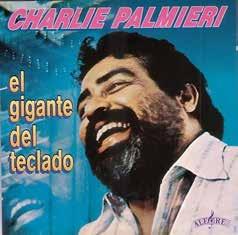
Marrero fue testigo del cambio que sufrió Iris después que el tipo de Trastalleres la dejara sola con su regalo. “Pero qué le ha pasado señores a la hija de Lola, que ya no sale y siempre está triste y sola”, decían los versos de su canción. “Ella que era”, continuaba, “la alegría del barrio, tan bonita muchachita todos la querían tener y ahora que está como está nadie la quiere querer”.Iris estuvo ocho meses sin salir de su casa. Se sentía deprimida y avergonzada. De ser una Flama pasó a ser una vela apagada y mustia. Se la pasaba maldiciendo “...al hombre que ha desgraciado mi vida” y no le hizo ninguna gracia que en la canción, según Marrero, “las malas lenguas dicen por ahí que la culpa de todo la tiene el coquí”
“Qué coquí ni qué ocho cuartos”, decía ella malhumorada, “la culpa la tengo yo por meterme con un chulo desgraciado que me violó cuando estaba arrebatada”. No quería traer a una criatura al mundo pero se sentía atrapada, incapaz de ejercer control sobre su cuerpo. No era la única ni mucho menos.
En los años 70, para poder abortar muchas mujeres en Puerto Rico viajaban a St. Thomas, pero Iris no lo sabía y como quiera tampoco tenía los medios para viajar y mucho menos para pagar por el procedimiento. Además, ¿quién la iba a llevar? Con su madre no podía contar, tan católica que era. Su hermana Lola estaba en Nueva York ajena a todo pues con ellos no se comunicaba. Arturo también estaba fuera de su vida con sus propios problemas. Después que perdió a Marina Fuentes
from page 10
estuvo años como la línea de un electrocardiograma una vez un corazón deja de latir.
Cuando Carmen y Abigail la vieron en Plaza Las Américas, solo faltaba un mes para que la Corte Suprema de Estados Unidos legalizara el aborto con su decisión en el caso de Roe v. Wade. Para Iris, el 22 de enero de 1973, cuando la Corte emitió su edicto, fue una terrible fecha. Ese mismo día ella dio a luz a una nena en el hospital Pavía de Santurce. Doña Lola estaba contenta de tener una nieta a pesar de las circunstancias de su concepción y del ostracismo en que el embarazo de Iris la había postrado a ella y a su hija. Iris no sentía la misma alegría. Por nueve meses, en lo más que ella había pensado era en encontrar al tipo de Trastalleres para matarlo. Cuando Marrero escribió que “Lolita así gritaba yo quiero ver al hombre que ha desgraciado mi vida”, dejaba entender entre líneas que no necesariamente quería verlo para saludarlo. Ahora, pensando en lo fuerte que iba a ser criar a su hija como madre soltera, le daban ganas de suicidarse. Cuando supo que el mismo día del nacimiento el aborto había sido legalizado, suspiró con ansias, preguntándose por qué, si ese hijoeputa la iba a violar dejándola a su propia merced, no lo había hecho el 23 de enero de ese año. Lo único que lograba al hacerse esa pregunta, al formular ese deseo desquiciado, era inflarse de rabia. Después del parto su estado de ánimo fluctuó por meses entre la ira y la depresión.
Del deseo de Iris Doña Lola nunca llegó a enterarse. Sentía como suyo el vaivén emocional de su hija pero no sabía cómo bregar. Lo que hacía era dejarla quieta y alejarse. Una mañana, cuando fue testigo de un ataque de nervios que hizo que Iris dijera que se iba a cortar las venas, le arrancó a la nieta de sus brazos. La nena estaba llorando y la abuela intentó calmarla. Iris gritaba el nombre del padre maldiciendo la hora en que lo había conocido. “¡Maldita sea la hora en que naciste, maldita sea la hora en que te conocí!”, exclamaba. Juraba que si se lo encontraba de frente lo mataba.
En ese momento Doña Dolores quiso que a su nieta, a quien le pusieron de nombre Azucena, no le gustara tanto el vacilón y el julepe como le había gustado a su madre. Estaba resuelta a evitarlo. Sabiendo que uno propone y Dios dispone, le rogaba que Azucena no fuera coqueta, provocadora, transgresora y aventurera; que no fuera una mujer como Iris, a quien le gustaba meter mano. Su juicio era retrospectivo. Pensaba que el pasado explicaba el presente y creía que el futuro podía ser distinto si se evitaba repetir el pasado. No entendía que el futuro de Azucena iba a estar sujeto a las condiciones de su presente en el futuro, que en el presente inmediato eran imposibles de anticipar y que por ende borrón y cuenta nueva no necesariamente iba a impedir que terminara igual que su madre.
Iris finalmente se pegó un tiro cuando Azucena cumplió tres años. Estaba sola, desempleada, esquelética, morbosa y desgastada. Raúl Marrero se alegró de haber compuesto “La hija de Lola” antes de su muerte pues decía que ese desenlace tan triste no le habría permitido escribir la canción. Cuando Mariana Romero se enteró del suicidio de su antigua compinche en Las Flamas, radicó un proyecto de ley que proponía crear un programa especial para darle opciones a mujeres como Iris: violadas, abandonadas, deprimidas y sin recursos. Las opciones incluían el aborto libre de costo para la mujer embarazada. La ley llegó a las manos del padre de Mariana justo después de que los votantes lo instalaran en La Fortaleza. Su primer acto de gobierno fue vetarla.
JOSÉ EDGARDO CRUZ FIFUEROA (cruzjose5319@gmail.com) es natural de San Juan y criado en El Fanguito y Barrio Obrero en Santurce, Puerto Rico. Es profesor emérito de ciencias políticas en la Universidad del Estado de Nueva York en Albany.
11 El Sol Latino June 2024
"La hija de Lola" revivió la carrera de Vitín Avilés cuando Charlie Palmieri lo invitó a que la cantara.
The Routledge Companion to Latine Theatre and Performance
edited by NOE MONTEZ and OLGA SANCHEZ SALTVEIT • NEW YORK, NY
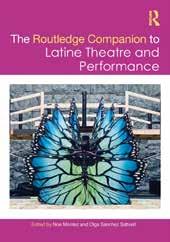
Overview -The Routledge Companion to Latine Theatre and Performance traces how manifestations of Latine self-determination in contemporary US theatre and performance practices affirm the value of Latine life in a theatrical culture that has a legacy of misrepresentation and erasure.
This collection draws on fifty interdisciplinary contributions written by some of the leading Latine theatre and performance scholars and practitioners in the United States to highlight evolving and recurring strategies of world making, activism, and resistance taken by Latine culture makers to gain political agency on and off the stage. The project reveals the continued growth of Latine theatre and performance through chapters covering but not limited to playwriting, casting practices, representation, training, wrestling with anti-Blackness and anti-Indigeneity, theatre for young audiences, community empowerment, and the market forces that govern the US theatre industry. This book enters conversations in performance studies, ethnic studies, American studies, and Latina/e/o/x studies by taking up performance scholar Diana Taylor’s call to consider the ways that “embodied and performed acts generate, record, and transmit knowledge.”
This collection is an essential resource for students, scholars, and theatremakers seeking to explore, understand, and advance the huge range and significance of Latine performance.
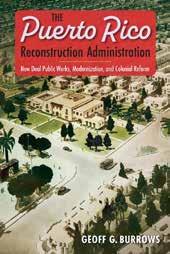
Reviews -”The Routledge Companion to Latine Theatre and Performance is essential reading for those who desire to delve into the breadth and depth of Latine theatre and performance. This remarkable volume offers an abundant array of aesthetically and culturally diverse contributions from foundational, established and emerging voices in the field. May the global theatre community engage this significant archive and resource for years to come!” - Anne García-Romero, University of Notre Dame, USA
“Montez and Sanchez Saltveit’s masterfully-edited volume is a treasury of insights into contemporary Latine theatre. This collection of essays by scholars and artists is an intergenerational conversation about Latine theatrical practices that reflect on and refract contemporary debates about identity, politics and culture.”- Patricia A. Ybarra, Brown University, USA
“This dynamic collection brings together the revelatory work of a wide array of Latine artists coupled by the historical, theoretical, and academic analysis of our best scholars. By celebrating the voice and of Latine artists and the insight of our best contemporary scholars, Dr. Sanchez Saltveit and Dr. Montez have created a vital gift for our field.” - Karen Zacarías, Playwright and Core Founder, Latinx Theatre Commons, USA
About the authors
NOE MONTEZ is Associate Professor and Chair of Theatre, Dance, and Performance Studies at Tufts University, USA.
OLGA SANCHEZ SALTVEIT is Assistant Professor of Theatre, Middlebury College, USA; the Co-Artistic and Producing Director, Dogteam Theatre Project; and Artistic Director Emerita, Milagro.
The Puerto Rico Reconstruction Administration: New Deal Public Works, Modernization, and Colonial Reform by
GAINESVILLE, FL | UNIVERSITY OF FLORIDA PRESS | April 30, 2024 | 248 pages
Description
An important New Deal program that shaped the relationship between Puerto Rico and the United States
This book explores the history and impact of the Puerto Rico Reconstruction Administration (PRRA), the most important New Deal agency to operate in Puerto Rico and the largest created for any United States territory. Geoff Burrows demonstrates how the PRRA improved living conditions across the island in the wake of destructive hurricanes and the Great Depression, while at the same time producing a reformed, strengthened, and lasting colonial relationship between Puerto Rico and the United States.
Using previously untapped archival sources and a wide range of primary and secondary texts, Burrows follows the agency from its founding by President Roosevelt in 1935 to its ending in 1955, situating its public works program in both Puerto Rican and New Deal contexts. The PRRA built the Caribbean’s first modern cement plant; implemented widespread rural electrification through the building of seven hydroelectric dams; constructed hurricaneproof houses, schools, and hospitals; and improved transportation and communication across the island. Puerto Rican engineers, planners, and officials took a leading role in these initiatives, which provided them social mobility and transformed the island’s economy from agricultural to industrial.
GEOFF G. BURROWS
The first institutional history and critical examination of the agency, The Puerto Rico Reconstruction Administration engages questions about the New Deal’s global reach. It investigates how New Deal agendas refashioned U.S. colonialism in Puerto Rico and indirectly contributed to the island’s current debt crisis and response to recent natural disasters such as Hurricane María.
Reviews
“Burrows’s pioneering and engaging study of the PRRA’s Engineering Division makes important contributions to understandings of the New Deal as imperial reform and of its relationship to Puerto Rican populism. An essential read for students and scholars of U.S. empire, Puerto Rico, the New Deal, and histories of public works.”—Anne S. Macpherson, author of From Colony to Nation: Women Activists and the Gendering of Politics in Belize, 1912–1982.
About the author
GEOFF BURROWS is a Senior Program Officer in the Division of Research, where he works with Fellowship Programs at Independent Research Institutions. He is a historian of Latin America, the Caribbean, and the United States whose research focuses on the New Deal in Puerto Rico. He received a PhD from the CUNY Graduate Center. Prior to NEH, he taught at Seton Hall University, Queens College, Hunter College, and the College of Staten Island.
12 El Sol Latino June 2024
Libros
/ Books
| February 2024 | 502 pages
| ROUTLEDGE
Good Boys, Bad Hombres - The Racial Politics of Mentoring Latino Boys in Schools
by MICHAEL V. SINGH • MINNEAPOLIS, MN | UNIV OF MINNESOTA PRESS
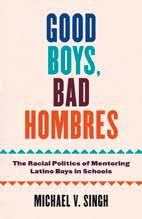
Description
Educational research has long documented the politics of punishment for boys and young men of color in schools—but what about the politics of empowerment and inclusion? In Good Boys, Bad Hombres, Michael V. Singh focuses on this aspect of youth control in schools, asking on whose terms a positive Latino manhood gets to be envisioned.
Based on two years of ethnographic research in an urban school district in California, Good Boys, Bad Hombres examines Latino Male Success, a school-based mentorship program for Latino boys. Instead of attempting to shape these boys’ lives through the threat of punishment, the program aims to provide an “invitation to a respectable and productive masculinity” framed as being rooted in traditional Latinx signifiers of manhood. Singh argues, however, that the promotion of this aspirational form of Latino masculinity is rooted in neoliberal multiculturalism, heteropatriarchy, and anti-Blackness, and that even such empowerment programs can unintentionally reproduce attitudes that paint Latino boys as problematic and in need of control and containment.
An insightful gender analysis, Good Boys, Bad Hombres sheds light on how mentorship is a reaction to the alleged crisis of Latino boys and is governed by the perceived remedies of the neoliberal state. Documenting the ways Latino men and boys resist the politics of neoliberal empowerment for new visions of justice, Singh works to deconstruct male empowerment, arguing
| April 16, 2024 | 268 pages
Reviews
In this field-defining ethnography, Michael V. Singh presents a groundbreaking exploration of the complexities of race, masculinity, discipline, and neoliberalism in urban education, challenging conventional notions of mentorship and Latino boyhood. Through meticulous research, Good Boys, Bad Hombres reveals the nuanced ways in which empowerment strategies intertwine with racial and gender dynamics, offering a critical perspective on the reconfiguration of Latino manhood in contemporary society.
Victor M. Ríos, University of California, Santa Barbara
What a gift! Compelling and timely, Good Boys, Bad Hombres provides a rich theoretical analysis of how racial neoliberalism, patriarchy, and antiquated notions of manhood shape educational narratives about Latino boys. This groundbreaking work has consequential implications for theorizing race, ethnicity, education, and youth work practice inside and outside schools. Offering a powerful and necessary critique of the racial politics that inform mentorship programs, Michael V. Singh provides a path forward to center love and dignity in educational spaces for Latino boys.
Bianca J. Baldridge, Harvard University
About the author
MICHAEL V. SINGH is an assistant professor in the Department of Chicana/o Studies at the University of California, Davis. Dr. Singh’s research is guided by questions of racial and gender justice in schools. He has three primary areas of focus: (1) Ethnographic portraits of the educational lives of Latino men and boys in school-day and after-school programming, (2) Life-history narratives exploring the experiences of K-12 Latino men teachers, and (3) Conceptual research on race, power, and schooling.



5K 5K 5K
13 El Sol Latino June 2024
Libros / Books
10TH ANNUAL FROZEN YOGURT AUG. 18, 2024 STANLEY PARK, WESTFIELD WALK/RUN
"HYBRID EVENT" IN-PERSON & VIRTUAL OPTIONS AVAILABLE Scan here to register
Springfield Old Timers Softball League
Royals vs Criollos Hartford
Van Sickle Field, Springfield, MA • May 18, 2024






14 El Sol Latino June 2024 Deports / Sports

McNelly Field (Parque de la Flats), Holyoke, MA • May 18, 2024 Deports
Holyoke Old Timers Softball League
Killer Chopa vs Los Salseros de Salinas





15 El Sol Latino June 2024
/ Sports
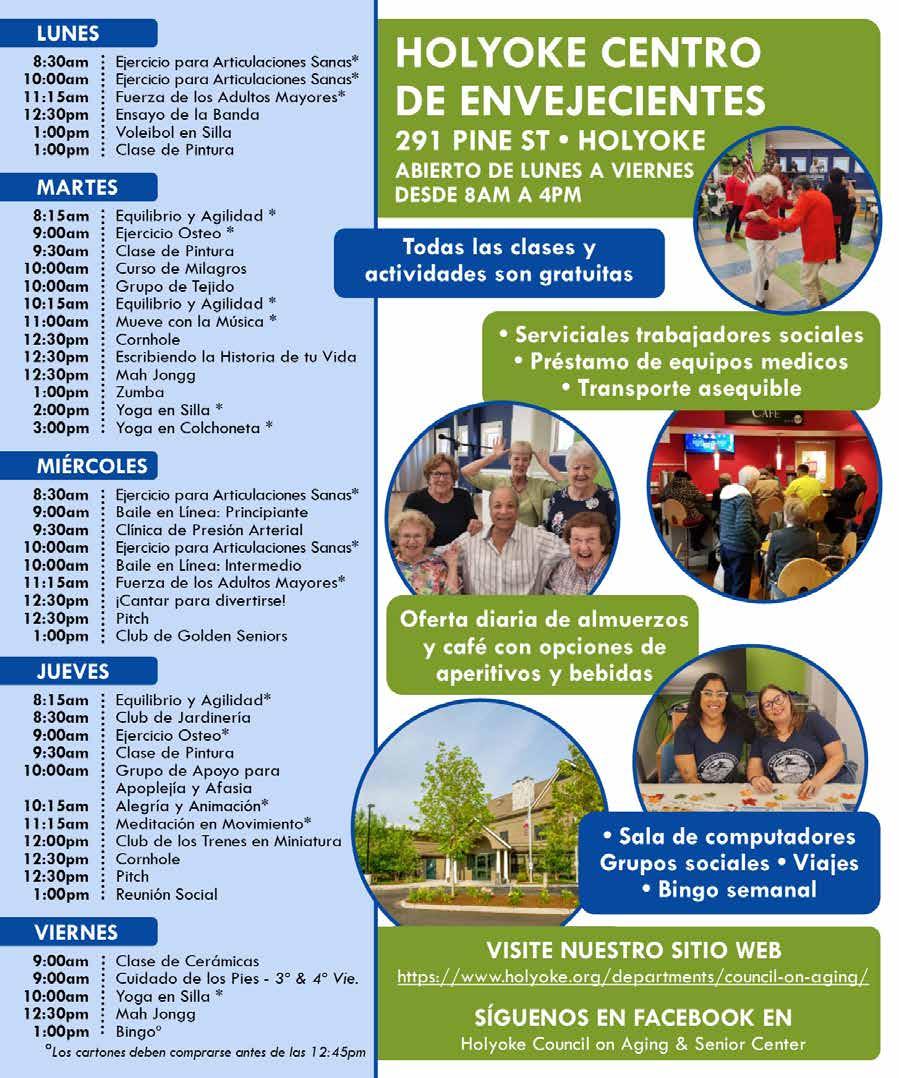
16 El Sol Latino June 2024













































